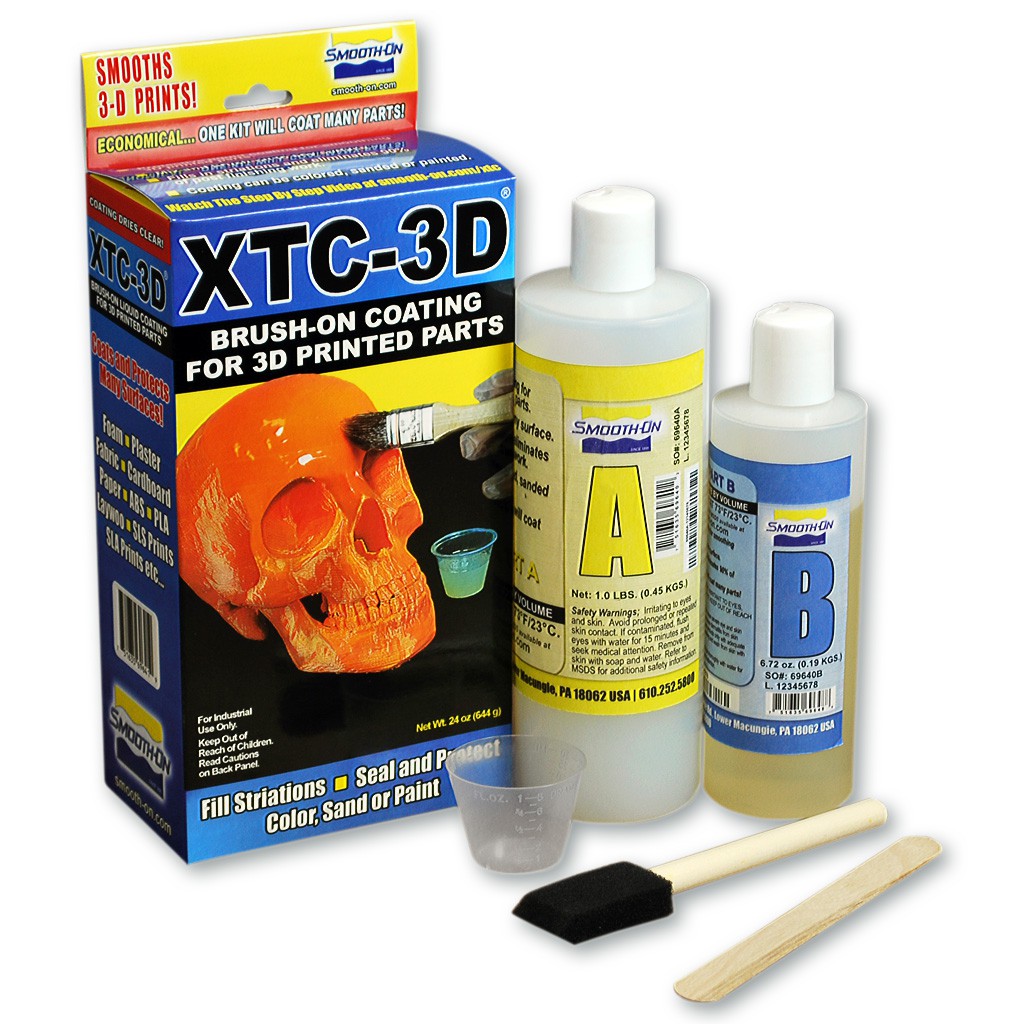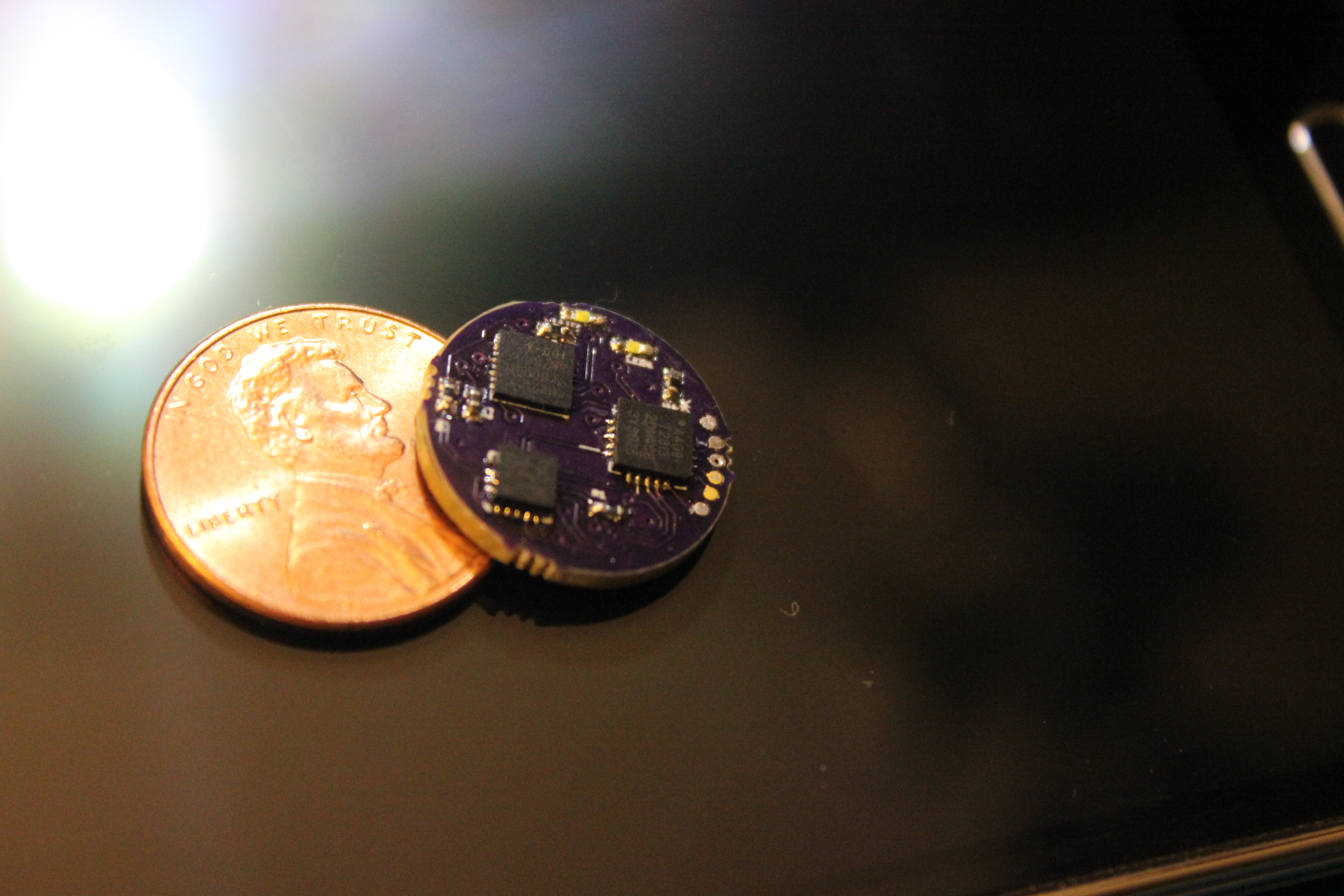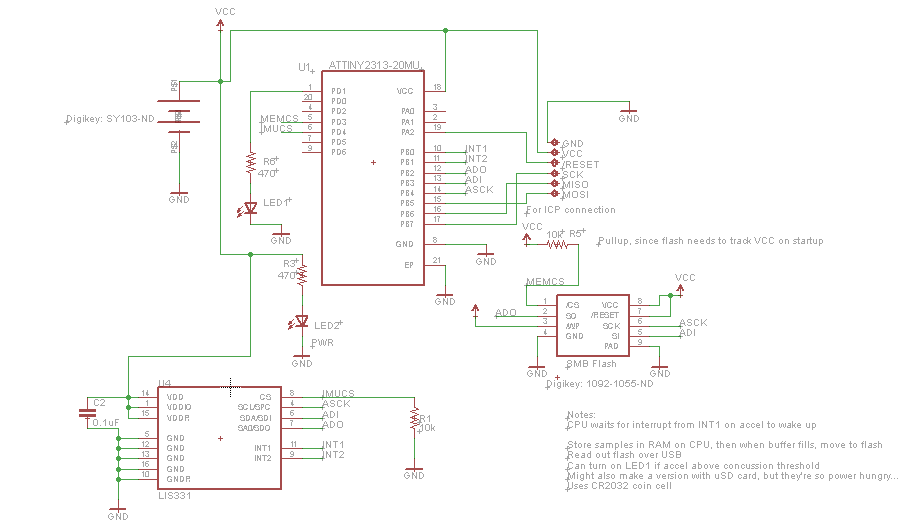-
Enclosure experiments
08/11/2015 at 17:31 • 0 commentsIf this thing is going to be stuffed in helmets or other equipment, it needs some kind of enclosure to protect the electronics from moisture and dirt. I used a material from Smooth-On called XTC-3D to finish a 3D print recently (which is what that material is designed for), and I think it may work for coating electronics too.
![]()
I tried it on a test PCB with no parts populated, since I don't want to pot the one that I'm hacking on, since I need to be able to probe traces and pads. I know that there are potting materials made specifically for electronics, but this stuff is pretty easy to get, a little bit goes a long way, so it's cheap, and we'll see if it works well.
-
Assembling V2
08/11/2015 at 16:57 • 0 commentsHere's V2, fabbed and assembled. It came in slightly larger than V1, but not by much. It uses the same 6 pads for programming and reading out the EEPROM. This is a 2 layer board, and the only reason it's not smaller is because of the routing. If I made a 4 layer version, I could probably cut the size in half. Although at this point, I don't know if there would be much to gain from going even smaller.
-
Version 2
08/11/2015 at 16:51 • 0 commentsI decided to make some changes to the parts I'm using.
I switched the old ATTiny85 to the larger ATTiny2313. The footprint is actually smaller, since it's a QFN part, and there's more I/O, which makes it easier to program and solves the problems in the last version. I also ditched a few discretes that I didn't really need. I also changed the battery to a rechargable Li-ion battery, which makes the whole thing a little thinner and that way you don't need to worry about replacing the battery, only recharging it. The accelerometer and EEPROM are the same.
-
Tasks left to do
05/09/2015 at 16:38 • 2 commentsFor simplicity, an LED is used to indicate if the acceleration threshold has been passed. One design decision I've been contemplating is adding a small radio so that trainers and doctors can immediately determine if a concussion has occurred. This will reduce the battery life, increase the cost, and increase the complexity though. I would also probably have to switch from the ATTiny85 to something like CC430 that has a microcontroller and radio built in if I didn't want to grow the size much. So I'm not sure if I'll do that or not. Maybe I'll make two versions, one with a radio and one without and see which works better.
I still need to build the programming/data download jig. This will probably be a little 3D printed, hinged thing with pogo pins on it so the device can be clamped down in it.
There's also a functional problem I need to fix in the current iteration. The accelerometer changes the impedance of the lines going into the ATTiny85 for programming, which means you can't both program the chip and have the accelerometer populated. You have to first populate the Tiny, program it, and then populate the accelerometer. So I need to play around a bit to fix that design problem.
Impact
Millions of young athletes get concussions each year and 50% go undiagnosed, leading to brain injury. Impact detects these events early.
 Hunter Scott
Hunter Scott

